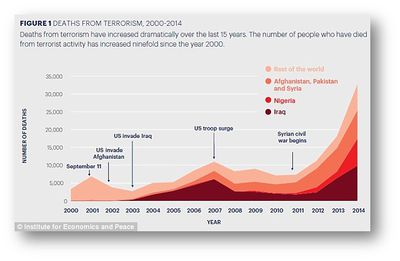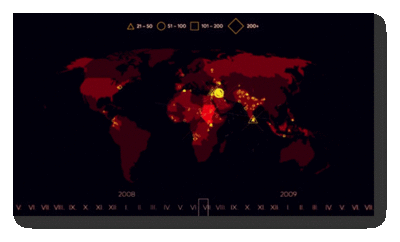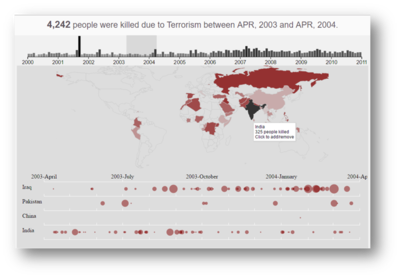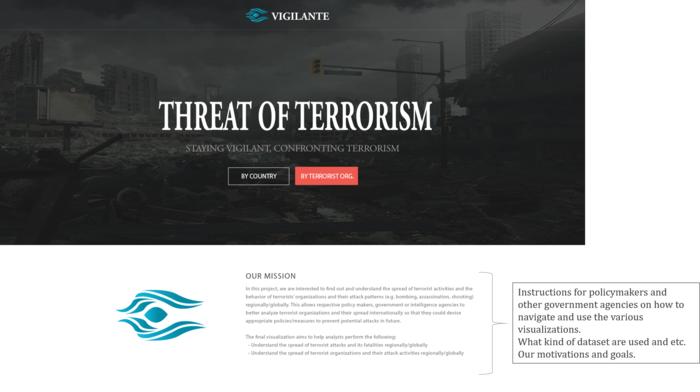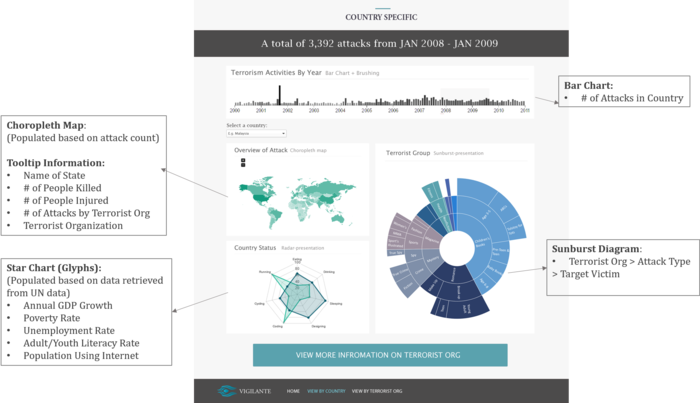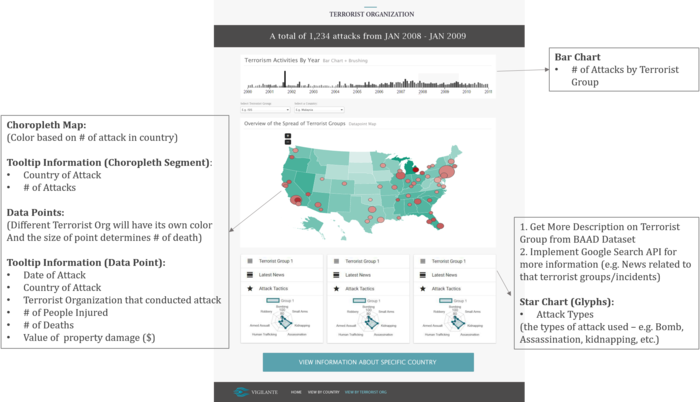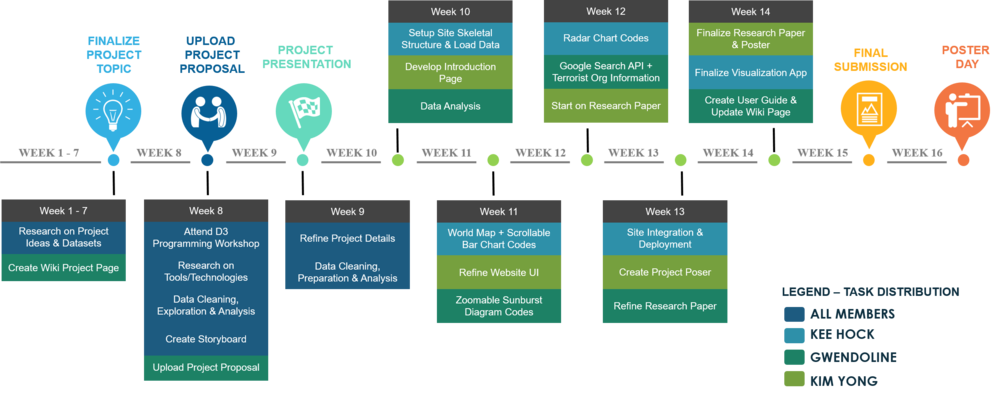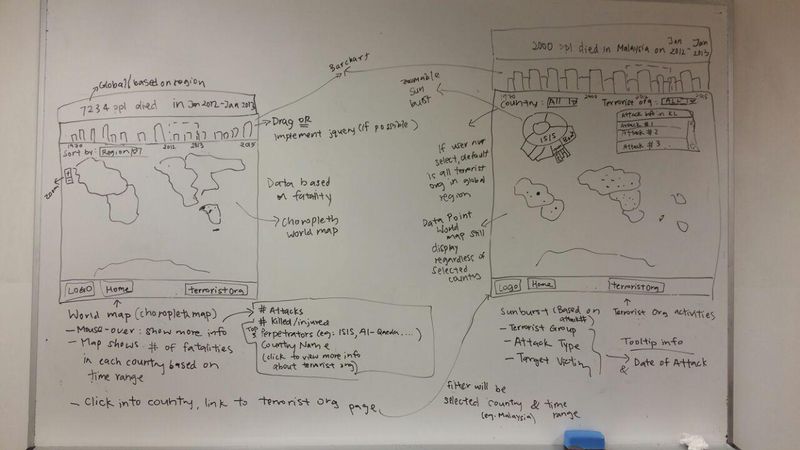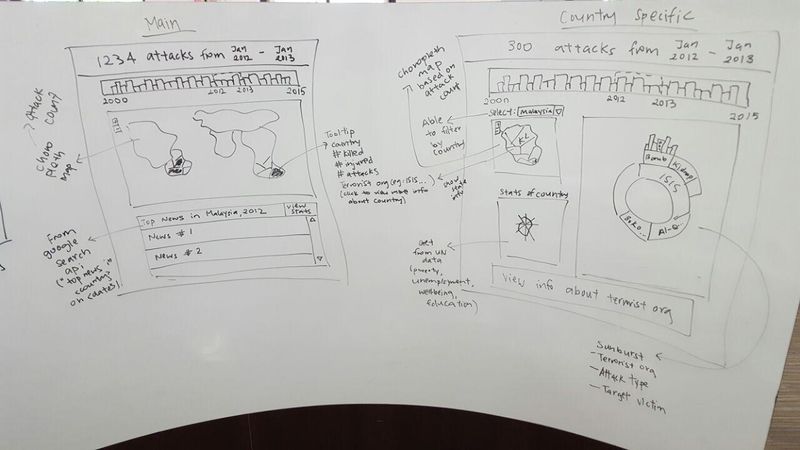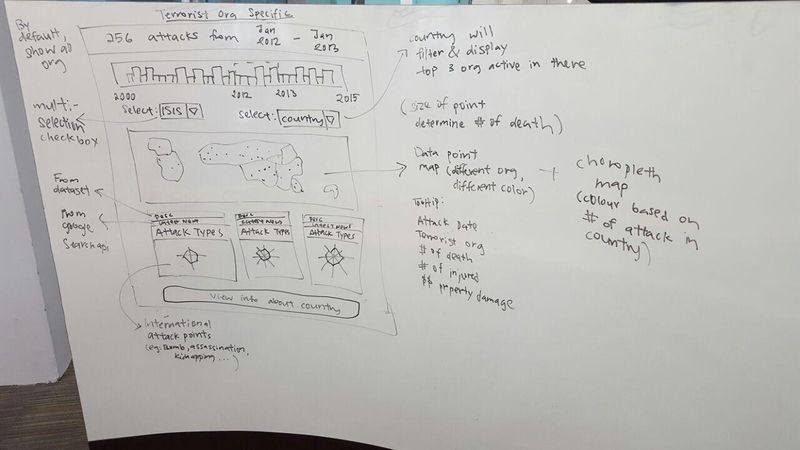Difference between revisions of "Staying Vigilant, Confronting Terrorism: Proposal"
Wx.tan.2013 (talk | contribs) |
Wx.tan.2013 (talk | contribs) |
||
| Line 19: | Line 19: | ||
| style="vertical-align:top;width:10%;" | | | style="vertical-align:top;width:10%;" | | ||
| − | | style="vertical-align:top;width:10%;" | <div style="padding: 3px; font-weight: bold; text-align:center; line-height: wrap_content; font-size:16px; border-bottom:1px solid #3D9DD7; font-family:helvetica"> [[Staying Vigilant, Confronting Terrorism: Proposal | <b>Version 1</b>]] | + | | style="vertical-align:top;width:10%;" | <div style="padding: 3px; font-weight: bold; text-align:center; line-height: wrap_content; font-size:16px; border-bottom:1px solid #3D9DD7; font-family:helvetica"> [[Staying Vigilant, Confronting Terrorism: Proposal Version 1 | <b>Version 1</b>]] |
| − | | style="vertical-align:top;width:10%;" | <div style="padding: 3px; font-weight: bold; text-align:center; line-height: wrap_content; font-size:16px; border-bottom:1px solid #3D9DD7; font-family:helvetica"> [[Staying Vigilant, Confronting Terrorism: | + | | style="vertical-align:top;width:10%;" | <div style="padding: 3px; font-weight: bold; text-align:center; line-height: wrap_content; font-size:16px; border-bottom:1px solid #3D9DD7; font-family:helvetica"> [[Staying Vigilant, Confronting Terrorism: Proposal | <b>Version 2</b>]] |
| style="vertical-align:top;width:20%;" | | | style="vertical-align:top;width:20%;" | | ||
Revision as of 16:23, 6 November 2016
The threat of terrorism is growing everyday and many countries, including Singapore, have taken steps to mitigate the risks of terrorism. In the National Day Rally 2016, PM Mr. Lee Hsien Loong mentioned that diplomats and security forces have been doing their job well but despite their efforts, it does not mean that terrorist attacks will not happen in Singapore. The recent attack that attempted to fire a rocket to hit Marina Bay Sands Area from Batam was successfully intervened but this signals to the country that the terrorism threat should not be taken lightly. In response to the growing terrorist threat, the SGSecure Movement was launched to prepare the public in the event of an attack. In recent years, there is a rise in research on terrorist organizations and the activities they have performed, regardless of scale, over the years. However, more still needs to be done to analyze past terrorist activities and gain insights from it easily so that all countries could better prepare for a worst case scenario.
In this project, we are interested to create a visualization that helps analysts perform the following:
- Identify terrorist organizations active in each country and the spread/types of activities they conducted to threaten the safety of the country, over different time periods
- Identify possible linkages between the number of terrorist activities occurring in a country and its development status
- Get a clearer understanding of each terrorist organization and the type of attacks they have conducted in a country/globally, over different time periods
- Compare different terrorist organizations and identify similarities and differences in their attack patterns, over different time periods
By conducting the analysis, it allows respective policy makers, government or intelligence agencies to better understand terrorist organizations and their spread internationally so that they could devise appropriate policies/measures to prevent potential attacks within their own country, regionally or globally in future.
In our analysis, we will only be using data within the year of 2000 - 2015. The rationale for the range of data selected is as follows:
- It does not provide strong relevance/insights for analysts to look at all the data in the past 45 years and attempt to predict activities of these terrorist organizations now/in the future. Due to the rapid changes in the globalized world, a range of 15 years will be adequate to help analysts spot trends/patterns of terrorist activities.
- Due to limitations of the data collected about each country's development status, the dataset only provides information from year 2000 - 2015.
- Due to technical limitations, loading past 45 years of data (156,773 records) into the application may cause it to become non-responsive and users may not be satisfied with the response rate. A range of 15 years (87,010 records) will yield just enough data for an insightful analysis and yet, does not sacrifice on the application's response rate.
The dataset for analysis will be retrieved from multiple databases, as elaborated below:
| Dataset/Source | Data Attributes | Rationale Of Usage |
|---|---|---|
(https://www.start.umd.edu/gtd/using-gtd/) |
|
|
(https://dataverse.harvard.edu/dataset.xhtml?persistentId=hdl%3A1902.1/16062) |
|
|
(Retrieved from World Bank) |
|
between the number of terrorist activities occurring in the country and the development state of the selected country. |
(Retrieved from UN Data - UNESCO Institute for Statistics) |
|
between the number of terrorist activities occurring in the country and the development state of the selected country. |
(Retrieved from UN Data - International Telecommunications Union) |
|
between the number of terrorist activities occurring in the country and the development state of the selected country. |
Many visual and data analysts have made use of data collected from the Global Terrorism Database to visualize and understand the extent of terrorist attacks around the world. Some of their works include the following:
| Related Works | What We Can Learn |
|---|---|
|
|
|
| |
|
Our group has proposed the following storyboard to assist analysts in the use of our visual application:
| Proposed Layout | How Analyst Can Conduct Analysis |
|---|---|
|
|
|
|
|
|
|
|
|
The following are some of the key technical challenges that we may face throughout the course of the project:
| Key Technical Challenges | How We Propose To Resolve |
|---|---|
| |
| |
| |
|
The following shows our project timeline for the completion of this project:
The following are some of the tools/technologies that we will be utilizing during the project:
- D3.js
- Chart.js
- Google Charts
- Google Search API
- Github
- Netbeans
- Marina Bay Attack Plot from Batam ‘Not to be Taken Lightly’ (http://www.straitstimes.com/singapore/rocket-attack-plot-not-to-be-taken-lightly)
- National Consortium for the Study of Terrorism and Responses to Terrorism (START). (2016). Global Terrorism Database [Data file]. Retrieved from http://www.start.umd.edu/gtd
- UN Datasets (http://data.un.org/)
- Big Allied and Dangerous Database (https://dataverse.harvard.edu/dataset.xhtml?persistentId=hdl%3A1902.1/16062)
- World Bank Database (http://databank.worldbank.org/data/home.aspx)
- D3.js (https://d3js.org/)
- Examples By Mike Bostock (https://bost.ocks.org/mike/example/)
The following are some of the proposed storyboard that we designed during our brainstorming sessions:
Feel free to comment to help us improve our project! (:

